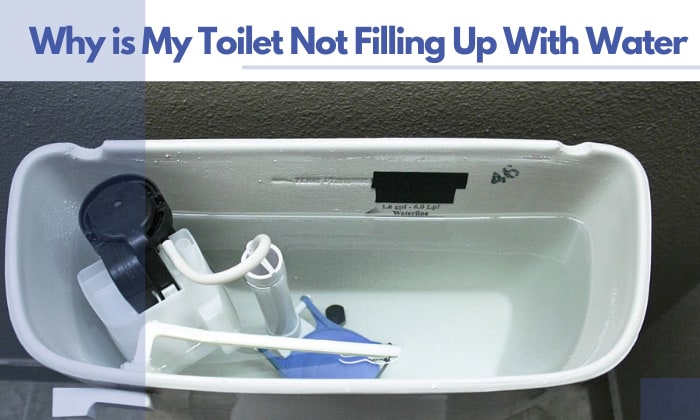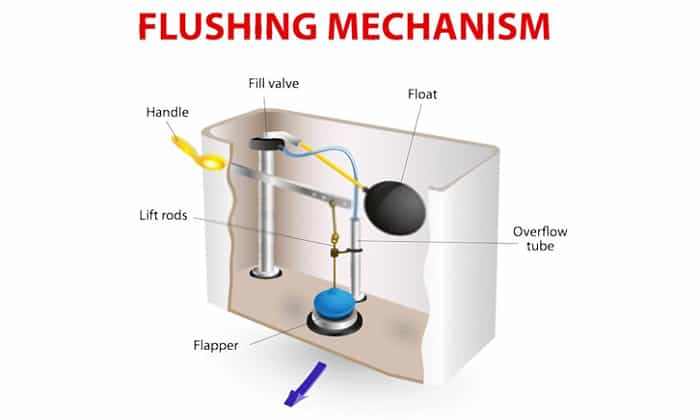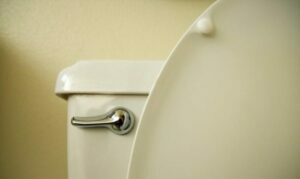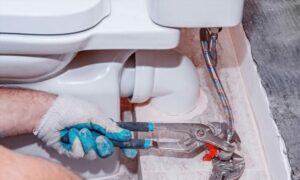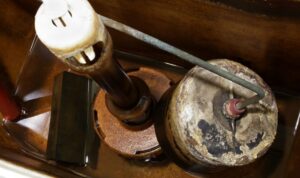The toilet tank should be able to refill water in one to three minutes, depending on the water pressure. If this is the case, then why is my toilet not filling up with water at all, or does it but very slowly?
This can be caused by faults in the toilet’s trip assembly, fill line, flapper, fill valve, overflow tube, or water pressure. In this article, we will explain each problem and give instructions on how to fix them.
Table of Contents
Reasons Why the Toilet Won’t Fill With Water
The bathroom is part of our everyday needs and having no water in the toilet tank is more problematic than it seems.
But what’s even more stressful is a toilet bowl not filling all the way, even when the water’s running.
So, to fix a slow-filling toilet tank, pay attention as we are about to list the culprits and solutions to this problem.
1. Wrong Position of the Toilet Float Ball
Traditional and most modern toilets have a float ball. This ball has an overflow tube beside the fill valve and a rod attached to the top of the fill valve.
It is the toilet’s water level regulator. The water is supposed to follow or match how low or high this ball is.
That is why the usual solution to a toilet tank not filling with water is simply to adjust the float ball.
- Open the toilet tank and place the cover away carefully.
- Bend the float ball downwards if the water is too high or upwards if the water is too low.
Remember, if the float ball sinks, then it’s not working anymore, and you need to replace it.
This may solve the problem of your toilet tank not filling up with water but if it didn’t, then keep reading the other reasons to find the solution.
2. Wrong Position of the Fill Valve
The problem with a toilet not refilling after flush or a toilet refilling slowly sometimes lies in the fill valve. Also known as “ballock,” it refills the tank with enough water after flushing.
To begin, there are two commonly-used fill valves: the float arm and the adjusted cylinder.
The float arm has a float ball. The adjusted cylinder has no ball, but a float cup attached around its shaft and moves up and down. However, the way to adjust them is the same.
- After opening the tank, check for a screw on top of the fill valve. This valve is located on the left.
- Turn the screw clockwise, and that will lower the water. Turning the screw counterclockwise will raise it. For a toilet with a float arm, the ball will be adjusted when you manipulate the screw.
For a toilet with an adjusted cylinder, the cup will go up when you loosen the screw and down when you tighten it.
A floatless fill valve is advanced, and it measures the water level through pressure since it is submerged. To adjust:
Turn the screw on top of the valve clockwise to raise the water level and counterclockwise to lower it.
However, if you see that the fill valve is worn out or has damage, adjusting is not enough to solve the problem. You need to replace it so it can do its job properly.
3. Worn Out Trip Assembly
Your toilet fills up slowly but water is running? The trip assembly (or trip lever) might be the reason. This is what triggers the flush mechanism, and part of this assembly is the handle.
If the flush handle is wobbly, you might need to adjust the lever nut inside the tank by turning it clockwise to tighten it.
But in this event, it usually means that the trip assembly is broken or worn out, so you need to replace it to fix a slow-filling toilet tank. For this task, it’s better to call a plumber or someone who knows how the toilet works.
4. Dirty Fill Line
The culprit for the push button toilet cistern not filling up can be its fill line connected to the water valve. It can be blocked by dirt or debris, especially when you use cistern fragrances. To see if this is what’s happening, do the following;
- Turn off the water valve.
- Detach the fill line from the valve and keenly check inside.
- If there is debris, manually remove it with tweezers and water.
- Attach the fill line back to the valve.
If your toilet tank is now filling up normally, then keep in mind to clean the fill line now and then to avoid the problem from recurring.
5. Broken Fill Line
A toilet tank not filling quickly can also mean a broken fill line. There might be leaks, or it’s not fit anymore to bring enough water to the tank.
As a solution, replace the fill line matching your toilet’s requirements and the water valve’s, such as the sizes.
- First, turn off the flush valve and drain the tank by flushing the remaining water inside.
- Take the fill line out by removing both the nut attached to the tank and the waterline below.
There might be excess water, so make sure you have a towel or a container under the fill line to catch it.
- Once removed, you can now attach the new fill line by using a vice grip on the nut for the waterline and your hand on the bullock nut for the toilet tank. You can tighten both nuts by turning them counterclockwise.
6. Damaged Toilet Flapper
A toilet flapper is a round disc made of rubber inside the toilet tank. It is responsible for letting the water into the bowl from the tank.
Therefore, if a toilet takes a long time to fill, the problem might be a broken flapper. It can lead to an experience of warping or hardening, which causes the water not to go into the bowl when you flush.
The flapper can also cause a toilet filling slowly because the flapper is worn out, and the water seeps into the bowl even without flushing. As a result, the tank doesn’t fill.
You can ask a plumber to replace the flapper for you, or you can do it by yourself:
- First, turn off the water valve and drain the toilet tank.
- Remove the flapper by disconnecting it from the toilet’s handle and taking it out of the tank.
- Attach the new flapper to the hinge bracket at the tank’s bottom and position it properly, making sure there will be no gaps.
- Connect the string (usually a chain) to the handle rod, just like how you found the old one.
- Test your work by feeling the pull of the handle.
- After this, you can turn on the water valve and test it with water.
7. Damaged Overflow Tube
The overflow tube is the one on the right beside the fill valve, and its purpose is to prevent the tank’s excess water from overflowing outside the toilet.
Aside from excess water, a damaged overflow tube can also be the reason for a toilet not filling all the way.
We recommend calling a plumber to replace the tube. Doing so alone can be tricky, so you might do it incorrectly.
8. Low Water Pressure or Weak Water Supply
When a toilet tank is not filling up with water, we immediately check the toilet. But sometimes, the toilet fills up slowly because there’s not enough water.
Lack of water pressure can sometimes be solved by switching the water valve to its maximum.
However, if this doesn’t work, it’s time to ask a plumber for help. Water supply problems such as clogs or a weak supply are not something we can fix ourselves (not unless you’re a professional at this!).
What Can Damage My Toilet Tank?
Mold, mildew, and mineral build-up can damage your water tank if you don’t clean them right away.
Aside from they can damage the parts (such as those that we have mentioned above) and create problems like lack of water in the tank, they will produce a bad odor that is off-putting for a bathroom, which is supposed to be clean and sanitized.
Conclusion
The answer to the question “Why is my toilet not filling up with water?” lies in the parts of a toilet’s tank.
There are cases where a toilet filling slowly is caused by the wrong positioning of some parts, such as the toilet float ball or fill valve. But most of the time, it can be because they are damaged, like in the case of valves, trip levers, flappers, fill line, and tubes.
If you can’t fix the problem yourself, it’s better to call a plumber. Fixing the water supply, for example, can only be done by professionals.
Read next:

I’m Paulk Webb, and I work as a writer for Saveourwaterrebates. I’m happy to put in the time and effort to conduct market research to identify the most pressing issues faced by households concerning their plumbing. Feel free to check out our guides to get the most informed recommendations for how to solve your problems.


